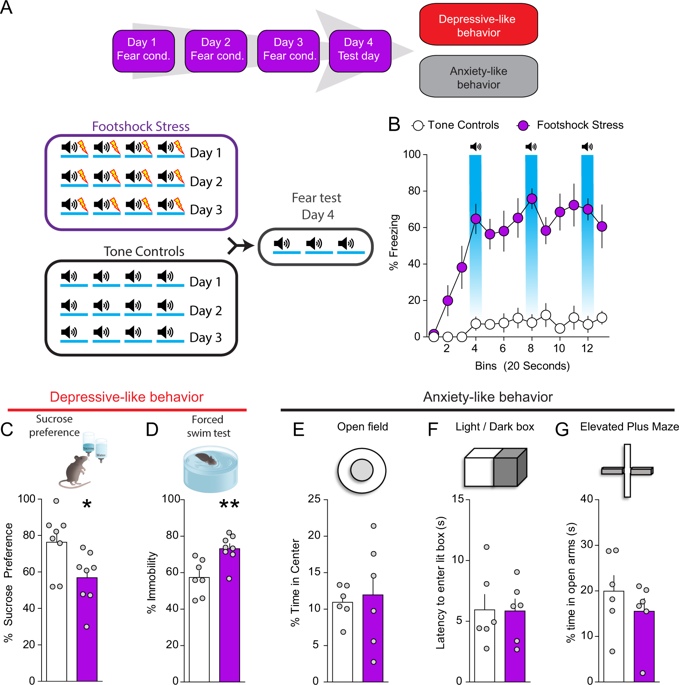Molecular Psychiatry ( IF 11.0 ) Pub Date : 2020-03-11 , DOI: 10.1038/s41380-020-0686-8 Marco Pignatelli 1, 2 , Hugo A Tejeda 1, 3 , David J Barker 4 , Leonardo Bontempi 1 , Jocelyn Wu 1 , Alejandra Lopez 1 , Sissi Palma Ribeiro 1 , Federica Lucantonio 5 , Eric M Parise 6 , Angélica Torres-Berrio 6 , Yocasta Alvarez-Bagnarol 1 , Rosa A M Marino 1 , Zhao-Lin Cai 7, 8 , Mingshan Xue 7, 8 , Marisela Morales 4 , Carol A Tamminga 9 , Eric J Nestler 6 , Antonello Bonci 10

|
Stress promotes negative affective states, which include anhedonia and passive coping. While these features are in part mediated by neuroadaptations in brain reward circuitry, a comprehensive framework of how stress-induced negative affect may be encoded within key nodes of this circuit is lacking. Here, we show in a mouse model for stress-induced anhedonia and passive coping that these phenomena are associated with increased synaptic strength of ventral hippocampus (VH) excitatory synapses onto D1 medium spiny neurons (D1-MSNs) in the nucleus accumbens medial shell (NAcmSh), and with lateral hypothalamus (LH)-projecting D1-MSN hyperexcitability mediated by decreased inwardly rectifying potassium channel (IRK) function. Stress-induced negative affective states are prevented by depotentiation of VH to NAcmSh synapses, restoring Kir2.1 function in D1R-MSNs, or disrupting co-participation of these synaptic and intrinsic adaptations in D1-MSNs. In conclusion, our data provide strong evidence for a disynaptic pathway controlling maladaptive emotional behavior.
中文翻译:

非突触边缘电路中的协同突触和内在可塑性驱动小鼠压力诱导的快感缺失和被动应对。
压力会促进消极的情感状态,包括快感缺失和被动应对。虽然这些特征部分是由大脑奖励回路中的神经适应介导的,但缺乏一个全面的框架来说明压力引起的负面影响如何在该回路的关键节点内编码。在这里,我们在压力诱导的快感缺失和被动应对的小鼠模型中显示,这些现象与伏隔核内侧壳中 D1 中等棘神经元 (D1-MSN) 上的腹侧海马 (VH) 兴奋性突触的突触强度增加有关。 NAcmSh),以及由内向整流钾通道 (IRK) 功能降低介导的下丘脑外侧 (LH) 突出的 D1-MSN 过度兴奋。通过 VH 到 NAcmSh 突触的去能化来防止压力引起的负面情感状态,恢复Kir2.1在 D1R-MSNs 中起作用,或破坏 D1-MSNs 中这些突触和内在适应的共同参与。总之,我们的数据为控制不良情绪行为的突触通路提供了强有力的证据。

























 京公网安备 11010802027423号
京公网安备 11010802027423号